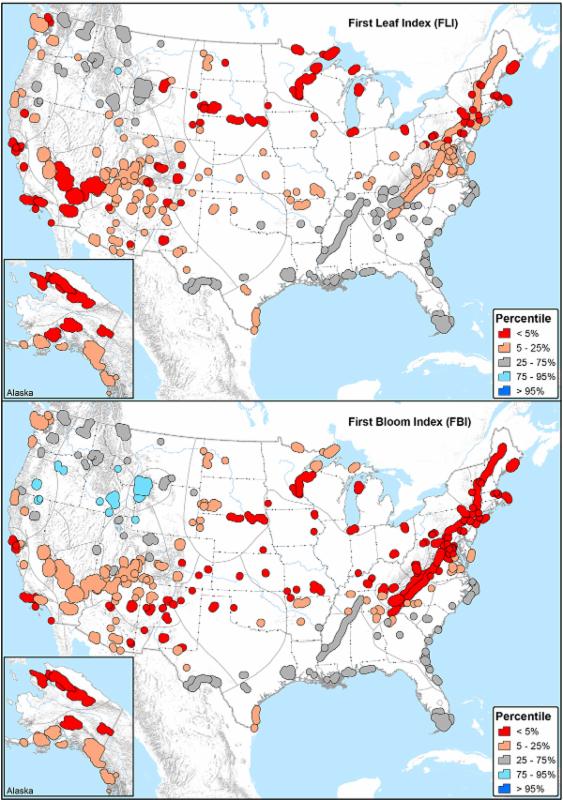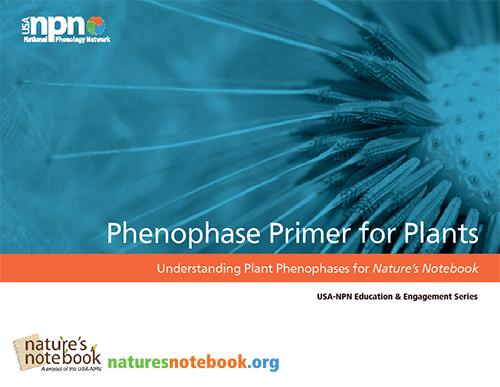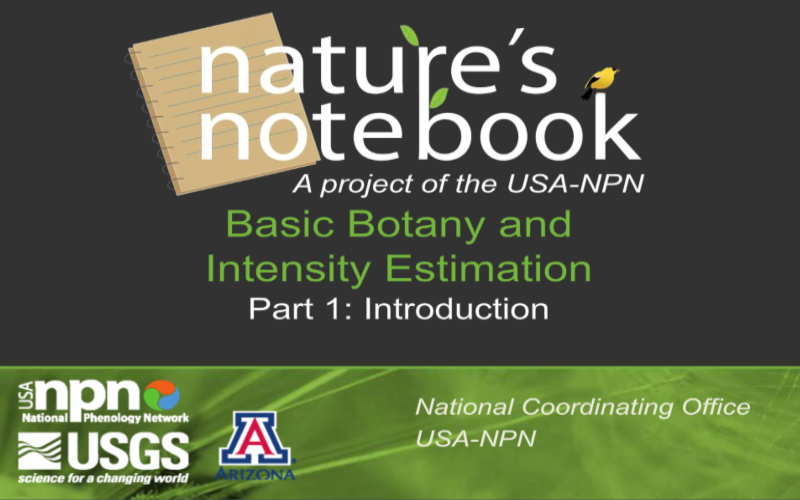|
This year may be winding down, but we are gearing up for another year of working with Refuges across the country in our shared goal of a broad understanding of plant and animal phenology and its relationship with environmental change. Here at USA-NPN, we want to express our continuing commitment to documenting phenological changes in wildlife species and the habitats on which they depend.
Our work is more important than ever - just in the last three months, an article was published showing that spring is advancing in our beloved National Parks, and another article affirmed the great contributions of citizen scientists to biodiversity monitoring across the globe. We will continue to provide you with data infrastructure to document phenology in a standardized way,
resources to enlist citizen scientists in your data collection efforts, and
tools to summarize and visualize these data.
Next year, you can look forward to a re-vamped USFWS Phenology Network website, a Report on the USFWS data that have been submitted so far to the National Phenology Database, an analysis of how the timing of spring is changing across the National Wildlife Refuge System, and a Nature's Notebook Campaign focused on monarch nectar plant resources. We look forward to further developing our partnership!
Happy Holidays,
 |
and
|
 |
|
USA-NPN
USFWS Liaison |
USA-NPN
Education Coordinator |
|
|
 |
|
 |
Photo: Ann Humphrey, USFWS |
Midway Atoll NWR tracks invasive species
In the summer of 2016, Midway Atoll NWR began a phenology monitoring project using
Nature's Notebook to study phenology of invasive
Verbesina encelioides, or golden crownbeard. The
Verbesina plants they have been monitoring since August of 2016 have generated sufficient data to estimate the number of days required for this invasive plant to go to seed.
This information is being used to guide weed treatment on the refuge, specifically, the minimum number of days it takes for the plant to go to seed is being used as the maximum time between visits to sites by the weed control technicians.
|
New Rio Grande Phenology Trail Coordinator
We are pleased to welcome a new Coordinator for the Rio Grande Phenology Trail, Tallie Segel! Tallie will be working as an Educator for the Bosque Ecosystem Monitoring Program, one of the Trail partners, and will coordinate activities among Trail members such as trainings, data sharing, and outreach to the public.
This Trail was spearheaded by phenology monitoring efforts at Valle de Oro NWR, which is tracking phenology of focal bird species and native and invasive trees. The Trail also includes Sevilleta NWR, which is tracking native plants and will be adding observations of the New Mexico whiptail in 2017.
Learn more about the Rio Grande Phenology Trail »
|
New Gulf Coast Phenology Trail Coordinator
The brand new Gulf Coast Phenology Trail also has a new Coordinator! Carly Rekosh, an SCA Intern, will be leading the planning and implementation of the Trail. This Trial will connect multiple Refuges and other organizations in SE Louisiana, Mississippi and beyond in documenting phenology of focal species, and how their phenology changes in response to climate change and restoration activities. Over the next few months, Carly will work with FWS staff and other partners to decide on Trial monitoring locations, select focal species, and recruit and train volunteers to monitor phenology.
|
|
|
New Resources for our Refuge Partners
|
 |
|
 |
Photo: William S. Justice |
New Monarch Nectar Plant campaign for 2017
The USA-NPN is teaming up with the US Fish & Wildlife Service to better understand the phenology of nectar sources for monarchs and other pollinators. In 2017, we will launch an observation campaign through Nature's Notebook to call on observers to monitor a suite of focal species that are important nectar sources for monarchs and other pollinators across the United States. Stay tuned for more information in our next quarterly newsletter!
|
 |
|
 |
Photo: Brian F Powell
|
Natural Resources Applications of phenology data
Are you curious how phenology data can be applied in natural resource management? This presentation,
given at the Wildlife Society Annual Meeting in October 2016 in Raleigh, NC,
gives multiple examples of the uses of the data stored in the National Phenology Database.
|

Short introductory videos for your use
We've created some introductory voiced-over PowerPoints for you to use in workshops and trainings. There are short videos on the topics of Phenology, Citizen Science, and the USA-NPN and
Nature's Notebook
. We welcome any feedback you have on other short videos that would be useful to you
.
Email us
!
|

The USA-NPN is part of a new study published in Ecosphere that shows spring is advancing in 75% of 276 National Parks studied. This shift is "extreme" in half of the Parks. The project used the Spring Indices, an index of spring developed by the USA-NPN and its partners to compare the recent timing of spring onset (past 10-30 years) to a historical range of variability (1901-2012). Learn more about what this study means for National Parks.
|

Phenology Primer for Plants now Available
The first section of the Phenophase Primer is now available for download. This beautifully illustrated guide provides detailed information on how to identify each of the phenophases we ask you to observe on the Nature's Notebook datasheets.
Please note that this is a draft version; a final version with information about conifers and more photos will be released next year. Once all three sections are complete, we will offer a printed and bound copy, much
like we do for the popular
Botany Primer
.
|

Basic Botany and Intensity Quizzes
The
Nature's Notebook
plant protocols ask you a series of questions about the presence of phenophases and the degree to which these phenophases are expressed, which we call intensity. This series of quizzes was designed to help you learn to identify phenophases and estimate intensity of your plants.
|
 |
|
 |
Photo: Brian F Powell
|
Local Phenology Leader Certification Course
This online, interactive course will give you guidance on planning your long-term phenology observation program, and walk you through how to use
Nature's Notebook
. The course will begin January 23, and will run for 10 weeks. We anticipate this course will take 25-30 hours to complete. The cost of the course will be $50, which, in addition to the Certification, will include a copy of the
Botany Primer
and a shirt embroidered with the
Nature's Notebook
logo.
|
|
|
|
|